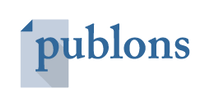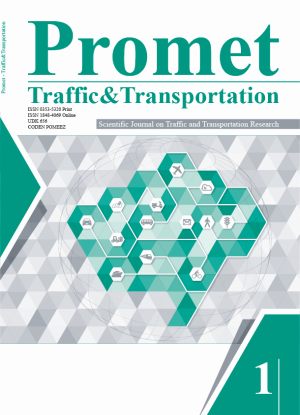Analysis of the Impacts of Passenger Demand on the Profitability of Different Types of Urban Rail Transit
DOI:
https://doi.org/10.7307/ptt.v35i1.4185Keywords:
urban rail transit, profitability, light rail transit, passenger demand, spatial characteristicAbstract
With the rapid development of urban rail transit (URT) in China, a contradiction between high costs and low passenger demand becomes prominent. Complete analysis of the impacts of passenger demand on the profitability of URT can be difficult to conduct, due to the multifaceted impact of passenger demand with multidimensional characteristics. To this end, we propose a strategy that helps to analyse the profitability of different types of URT, taking into account the spatial and temporal characteristics of demand. Based on data of the Shunde (SD) district in China, the profitability of metro, light rail transit (LRT), monorail and tram was evaluated. Results show the profitability under different demand levels. Tram might be the best choice at low demand levels. At medium demand levels, LRT and monorail are competitive. At high demand levels, LRT with medium to high capacity and low cost is a good alternative to metro, though the capacity of metro is higher. Utilizing the URT with high capacity under insufficient demand can aggravate the burden of depreciation, and make it hard to achieve profit. The spatial characteristics of the demand described in this paper reflect the problem of insufficient demand in marginal areas due to the diversified construction of URT.
References
Shen Q, Chen P, Pan H. Factors affecting car ownership and mode choice in rail transit-supported suburbs of a large Chinese city. Transportation Research Part A: Policy and Practice. 2016;94:31-44. DOI: 10.1016/j.tra.2016.08.027.
Kelly FJ, Zhu T. Transport solutions for cleaner air. Science. 2016;352(6288):934-936. DOI: 10.1126/science.aaf3420.
Wen S, Shi J, Zhang W. Impact of urban rail transit network on residential and commercial land values in China: A Complex Network Perspective. Complexity. 2021;2021:11-15. DOI: 10.1155/2021/8849066.
Guerra E, Cervero R. Cost of a ride: The effects of densities on fixed-guideway transit ridership and capital costs. Journal of the American Planning Association. 2011;77(3):267-290. DOI: 10.1080/01944363.2011.589767.
Sohu. The project costs per km of heavy rail transit in Beijing are more than one billion CNY. http://news.sohu.com/20150630/n415908777.shtml [Accessed 18th May 2020].
Ransom MR. The effect of light rail transit service on nearby property values. Journal of Transport and Land Use. 2018;11(1):387-404. DOI: 10.5198/jtlu.2018.1096.
Zhao J, et al. Cost of an urban rail ride: A nation-level analysis of ridership, capital costs and cost-effectiveness performance of urban rail transit projects in China. Journal of Transport and Land Use. 2018;11(1):1173-1191. DOI: 10.5198/jtlu.2018.1292.
China Association of Metros. Annual Report. 2019. https://www.camet.org.cn/tjxx/5133 [Accessed 24th May 2022].
Ministry of Land, Infrastructure, Transport and Tourism. Annual report of railway statistics. 2019. https://www.mlit.go.jp/tetudo/tetudo_tk2_000053.html [Accessed 9th Aug 2022].
Korea Bureau of Statistics. Comprehensive urban railroad indicators. 2019. https://kosis.kr/statisticsList/statisticsListIndex.do?vwcd=MT_ZTITLE&menuId=M_01_01 [Accessed 9th Aug 2022].
Hensher DA, Ho C, Mulley C. Identifying preferences for public transport investments under a constrained budget. Transportation Research Part A: Policy and Practice. 2015;72:27-46. DOI: 10.1016/j.tra.2014.12.002.
Bokor Z. Cost calculation model for logistics service providers. Promet – Traffic&Transportation. 2012;24(6):515-524. DOI: 10.7307/ptt.v24i6.1198.
Hall M, Weiss L. Firm size and profitability. The Review of Economics and Statistics. 1967;319-331. DOI: 10.2307/1926642.
Meyer JR, John F, Wohl M. The Urban Transportation Problem. London: Oxford University Press; 1965.
Brand C, Preston J. The software tool: Specification and case study validation. Transport Studies Unit, University of Oxford. TSU Working Paper (Ref. 948), 2003.
Li XC, John P. Assessing the financial and social costs of public transport in differing operating environments and with endogenous demand. Transportation Planning and Technology. 2015;38(1):28-43. DOI: 10.1080/03081060.2014.976981.
Grimaldi R, Laurino A, Beria P. The choice between bus and light rail transit: A stylised cost-benefit analysis model. Munich Personal RePEc Archive; 2010. https://mpra.ub.uni-muenchen.de/24872/1/MPRA_paper_24872.pdf [Accessed 16th August 2022].
Tirachini A, Hensher DA, Jara-Díaz SR. Restating modal investment priority with an improved model for public transport analysis. Transportation Research Part E: Logistics and Transportation Review. 2010;46(6):1148-1168. DOI: 10.1016/j.tre.2010.01.008.
Manoratna DA, Kawata K, Yoshida Y. Environmental impact and travel time savings of a new monorail system in colombo’s commuting traffic. Transportation Research Part D: Transport and Environment. 2017;51:122-128. DOI: 10.1016/j.trd.2016.12.003.
Vu T, Preston J. Assessing the social costs of urban transport infrastructure options in low and middle income countries. Transportation Planning and Technology. 2020;43(4):365-384. DOI: 10.1080/03081060.2020.1747202.
Avenali A, et al. Rail versus bus local public transport services: A social cost comparison methodology. Transportation Research Interdisciplinary Perspectives. 2020;7:100200. DOI: 10.1016/j.trip.2020.100200.
Wang R. Autos, transit and bicycles: Comparing the costs in large Chinese cities. Transport Policy. 2011;18(1):139-146. DOI: 10.1016/j.tranpol.2010.07.003.
Keeler TE, Small K. The full costs of urban transport part III: Automobile costs and final intermodal cost comparisons. Monograph No. 21. University of California, Berkeley: Institute of Urban and Regional Development; 1975.
Flyvbjerg B, Skamris Holm MK, Buhl SL. How (in) accurate are demand forecasts in public works projects?: The case of transportation. Journal of the American Planning Association. 2005;71(2):131-146. DOI: 10.1080/01944360508976688.
Kain JF. The urban transportation problem: A reexaminati-on and update. In: Gomez-Ibanez J, Tye WB, Winston C. (Eds.) Essays in transportation economics and policy: A handbook in honor of John R. Meyer. Washington, DC: Brookings Institution Press; 1999. p. 359-401.
Pickrell DH. Urban rail transit projects: Forecast versus actual ridership and costs. Final report. Urban Mass Transportation Administration, United States. Report number: UMTA-MA-08-9021-89-1, 1990.
Ministry of Construction of the People's Republic of China. CJJ/T 114-2007. Classification standard of urban public transport. Beijing: China Architecture and Building Press; 2007.
Anas A, Moses LN. Mode choice, transport structure and urban land use. Journal of Urban Economics. 1979;6(2):228-246. DOI: 10.1016/0094-1190(79)90007-X.
Monson K. String block vs superblock patterns of dispersal in China. Architectural Design. 2008;78(1):46-53. DOI: 10.1002/ad.608.
Wang M, et al. Determining the level of service scale of public transport system considering the distribution of service quality. Journal of Advanced Transportation. 2022;2022. DOI: 10.1155/2022/5120401.
Shang B, Zhang X. Passenger-flow spatial distribution model of urban rail transit. [城市轨道交通客流空间分布模型]. Journal of Southwest Jiaotong University [西南交大学报]. 2013;48(03):539-545. DOI: 10.3969/j.issn.0258-2724.2013.03.023.
Sharma R, Newman P. Urban rail and sustainable development key lessons from Hong Kong, New York, London and India for emerging cities. Transportation Research Procedia. 2017;26:92-105. DOI: 10.1016/j.trpro.2017.07.011.
Kot S. Cost structure in relation to the size of road transport enterprises. Promet – Traffic&Transportation. 2015;27(5):387-394. DOI: 10.7307/ptt.v27i5.1687.
Nurcahyo R, et al. Mass rapid transit operation and maintenance cost calculation model. Journal of Advanced Transportation. 2020;2020. DOI: 10.1155/2020/7645142.
Zhu Y, Zhang XQ, Jin Y, Liao Y. Research on construction condition of intercity railway based on financial analysis [基于财务分析的城际铁路建设条件研究]. Journal of Railway Engineering Society [铁道工程学报]. 2011;28(08):116-120. DOI: 10.3969/j.issn.1006-2106.2011.08.022.
Jiang Z, et al. Reinforcement learning approach for coordinated passenger inflow control of urban rail transit in peak hours. Transportation Research Part C: Emerging Technologies. 2018;88:1-16. DOI: 10.1016/j.trc.2018.01.008.
Zhu Y, et al. A bi-level model for single-line rail timetable design with consideration of demand and capacity. Transportation Research Part C: Emerging Technologies. 2017;85:211-233. DOI: 10.1016/j.trc.2017.09.002.
Ministry of Housing and Urban-Rural Development of the People's Republic of China. GB50157-2013. Code for design of metros. Beijing: China Architecture and Building Press; 2013.
Li YH, et.al. Research on the quantitative method of multi-level and multi-mode rail transit system selection in metropolitan areas [都市区轨道交通多层次各制式量化选择方法研究]. Railway Standard Design [铁道标准设计]. 2020;64(06):9-16. DOI: 10.13238/j.issn.1004-2954.201907280002.
National Bureau of Statistics. Annual average wages of employed persons by industry and position in 2020. http://www.stats.gov.cn/xxgk/sjfb/zxfb2020/202105/t20210519_1817691.html [Accessed 12th May 2022].
The People's Republic of China. Opinions of the general office of the State Council on further strengthening the management of urban rail transit planning and construction. Beijing: the Office of the State Council; 2018.
Ministry of Construction of the People's Republic of China. JB1004-2008. Construction standards for urban rail transit engineering projects. Beijing: China Planning Press; 2008.
Bian Y, Yang Y, Zhou X. Study on construction condition index of urban rail transit project [城市轨道交通项目建设条件指标研究]. Urban Rapid Rail Transit [都市快轨交通]. 2015;28(6):1-5. DOI: 10.3969/j.issn.1672-6073.2015.06.001.
People's Republic of China. National Development and Reform Commission on Strengthening Urban Rail Transit Notice of planning and construction management. Beijing: National Development and Reform Commission; 2015.
Li WX, Yin S. Analysis on cost of urban rail transit [城市轨道交通成本构成分析]. Journal of Transportation Systems Engineering & Information Technology [交通运输系统工程与信息]. 2012;12(02):9-14. DOI: 10.3969/j.issn.1009-6744.2012.02.002.
Kuby M, Barranda A. Upchurch C. Factors influencing light-rail station boardings in the United States. Transportation Research Part A: Policy and Practice. 2004;38(3):223-247. DOI: 10.1016/j.tra.2003.10.006.
Downloads
Published
How to Cite
Issue
Section
License
Copyright (c) 2023 Qi Zhou, Baohua Mao, Sairong Peng, Junsheng Huang, Peining Tian

This work is licensed under a Creative Commons Attribution-NonCommercial 4.0 International License.







